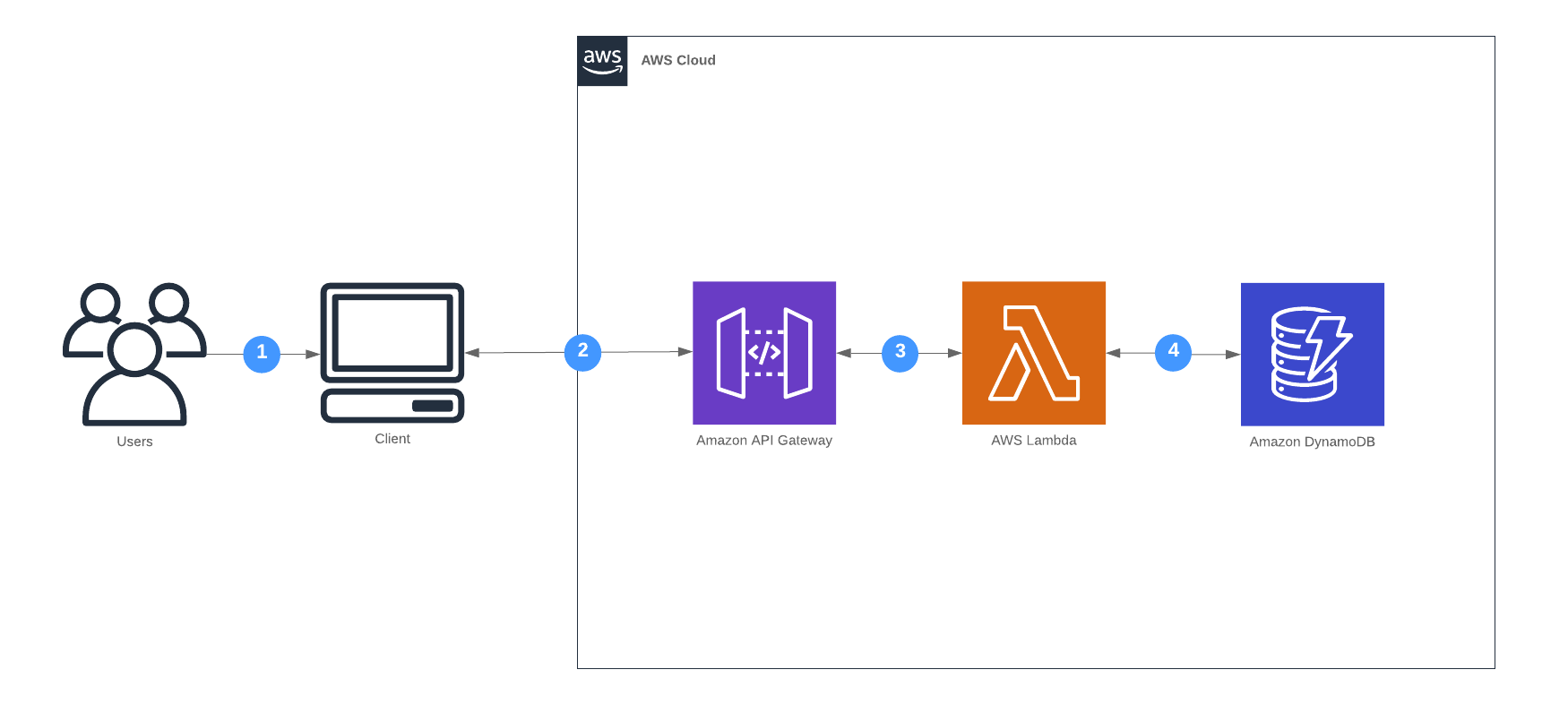Lab 2 - URL Shortener
In this Lab we will:
- Create a first basic version of the url shortener
- Learn how to store data in AWS DynamoDB using the AWS Java SDK
- See some more advanced features of AWS SAM Templates
You completed this lab if you:
- Shortened at least one URL
- Typed the shortened URL into your browser and got redirected properly
Overview
At the end of this lab the url shortener will consist of the following components.

Implement a URL shortener using DynamoDB for storage
- Implement one function to create a shortened URL via HTTP POST
- Implement one function to retrieve the full URL via HTTP GET issuing a
302 Foundredirect
Below you find an example interaction with your service:
$ curl -v -XPOST -d '{"url": "https://superluminar.io"}' https://$ENDPOINT
> POST / HTTP/1.1
< HTTP/1.1 Created 201
{"short_url": "https://$ENDPOINT/${short-id}"}
$ curl -v https://$ENDPOINT/${short-id}
> GET /${short-id} HTTP/1.1
< HTTP/1.1 302 Found
< Location: https://superluminar.io
Hints
Create a DynamoDB table
Make an addition to your CDK stack to define the DynamoDB table resource.
You need to add the DynamoDB package dependency in the build.gradle file.
Add the something like this to ServerlessWorkshopStack.java
// Create DynamoDB table
Table table = Table.Builder.create(this, "dynamoDbTable")
.partitionKey(Attribute.builder().name("id").type(AttributeType.STRING).build())
.build();
For an overview of the DynamoDB package, see here.
Give your Lambda functions permissions to access the DynamoDB table
Take a look at the grantReadData method on your Table class.
Inject the DynamoDB table via environment variables
Lambda functions have access to their environment. Define a variable and pass in the table name.
Use the AWS SDK to query DynamoDB
Use the AWS SDK to read and write data from DynamoDB. Setup a client like this:
DynamoDBClient client = DynamoDbClient.builder()
.credentialsProvider(EnvironmentVariableCredentialsProvider.create())
.region(Region.of(System.getenv(SdkSystemSetting.AWS_REGION.environmentVariable())))
.build();
Use the methods getItem/putItem.
Use path parameters
Use path parameters to inject the path value into your Lambda function. See APIGatewayProxyRequestEvent.getPathParameters.
Generate a short unique ID
Generate a short unique ID for the URL with a fancy algorithm. Or use this, an implementation of the FNV-hash:
private String shortenURL(String url) {
byte[] data = url.getBytes();
BigInteger hash = new BigInteger("cbf29ce484222325", 16);
for (byte b : data) {
hash = hash.xor(BigInteger.valueOf((int) b & 0xff));
hash = hash.multiply(new BigInteger("100000001b3", 16)).mod(new BigInteger("2").pow(64));
}
return hash.toString(36);
}
Cheating
You can find an example implementation here: https://github.com/superluminar-io/cdk-java-workshop/compare/lab0..lab1?expand=1